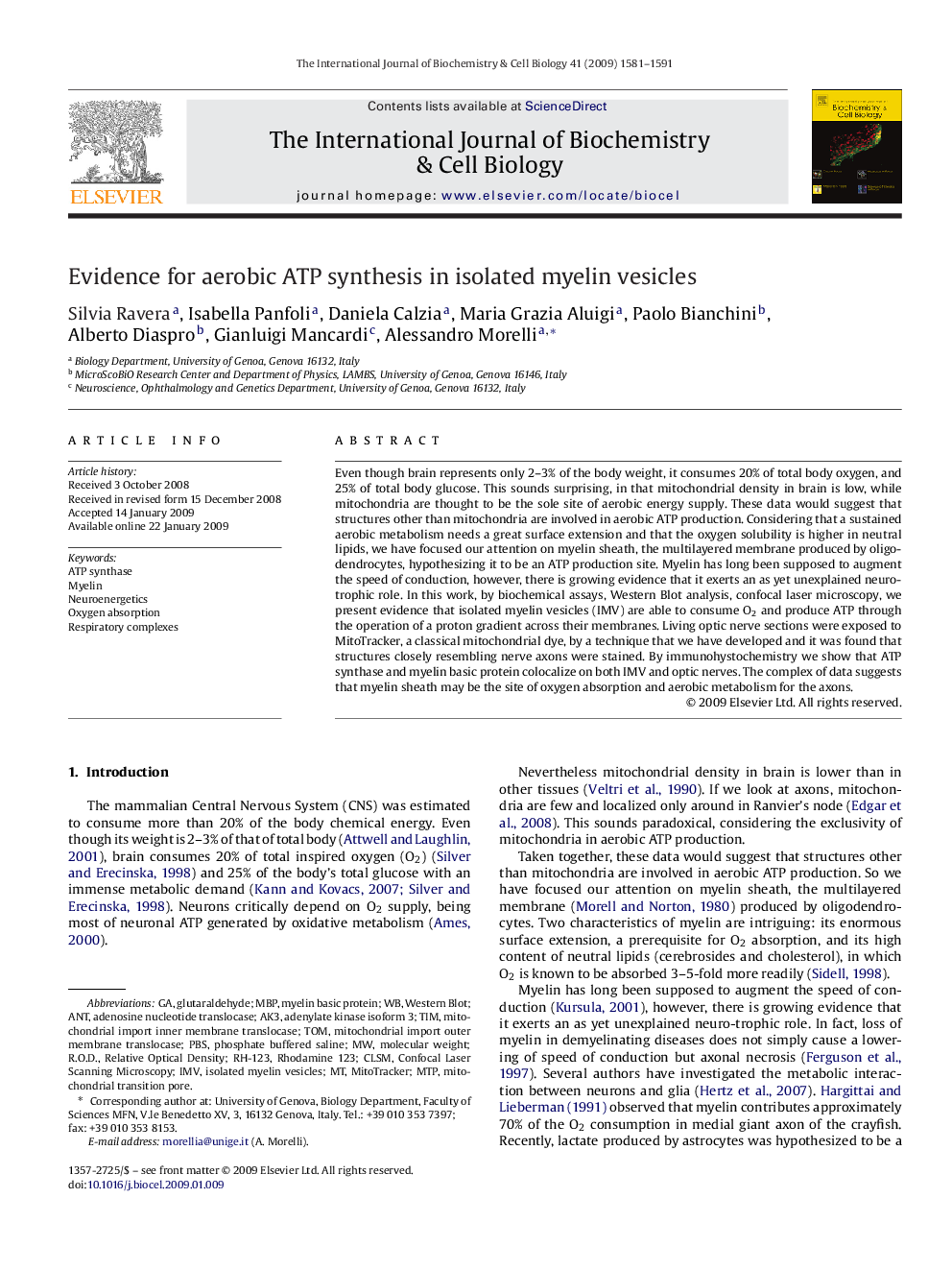| Article ID | Journal | Published Year | Pages | File Type |
|---|---|---|---|---|
| 1984934 | The International Journal of Biochemistry & Cell Biology | 2009 | 11 Pages |
Abstract
Even though brain represents only 2-3% of the body weight, it consumes 20% of total body oxygen, and 25% of total body glucose. This sounds surprising, in that mitochondrial density in brain is low, while mitochondria are thought to be the sole site of aerobic energy supply. These data would suggest that structures other than mitochondria are involved in aerobic ATP production. Considering that a sustained aerobic metabolism needs a great surface extension and that the oxygen solubility is higher in neutral lipids, we have focused our attention on myelin sheath, the multilayered membrane produced by oligodendrocytes, hypothesizing it to be an ATP production site. Myelin has long been supposed to augment the speed of conduction, however, there is growing evidence that it exerts an as yet unexplained neuro-trophic role. In this work, by biochemical assays, Western Blot analysis, confocal laser microscopy, we present evidence that isolated myelin vesicles (IMV) are able to consume O2 and produce ATP through the operation of a proton gradient across their membranes. Living optic nerve sections were exposed to MitoTracker, a classical mitochondrial dye, by a technique that we have developed and it was found that structures closely resembling nerve axons were stained. By immunohystochemistry we show that ATP synthase and myelin basic protein colocalize on both IMV and optic nerves. The complex of data suggests that myelin sheath may be the site of oxygen absorption and aerobic metabolism for the axons.
Keywords
PBSCLSMMitoTrackerMBPANTAK3ToMMTPIMVTIMATP synthaserelative optical densityOxygen absorptionRh-123Rhodamine 123Phosphate buffered salineRespiratory complexesMitochondrial transition poreMyelinconfocal laser scanning microscopyNeuroenergeticsMolecular weightWestern blotMyelin basic proteinGlutaraldehyde
Related Topics
Life Sciences
Biochemistry, Genetics and Molecular Biology
Biochemistry
Authors
Silvia Ravera, Isabella Panfoli, Daniela Calzia, Maria Grazia Aluigi, Paolo Bianchini, Alberto Diaspro, Gianluigi Mancardi, Alessandro Morelli,
